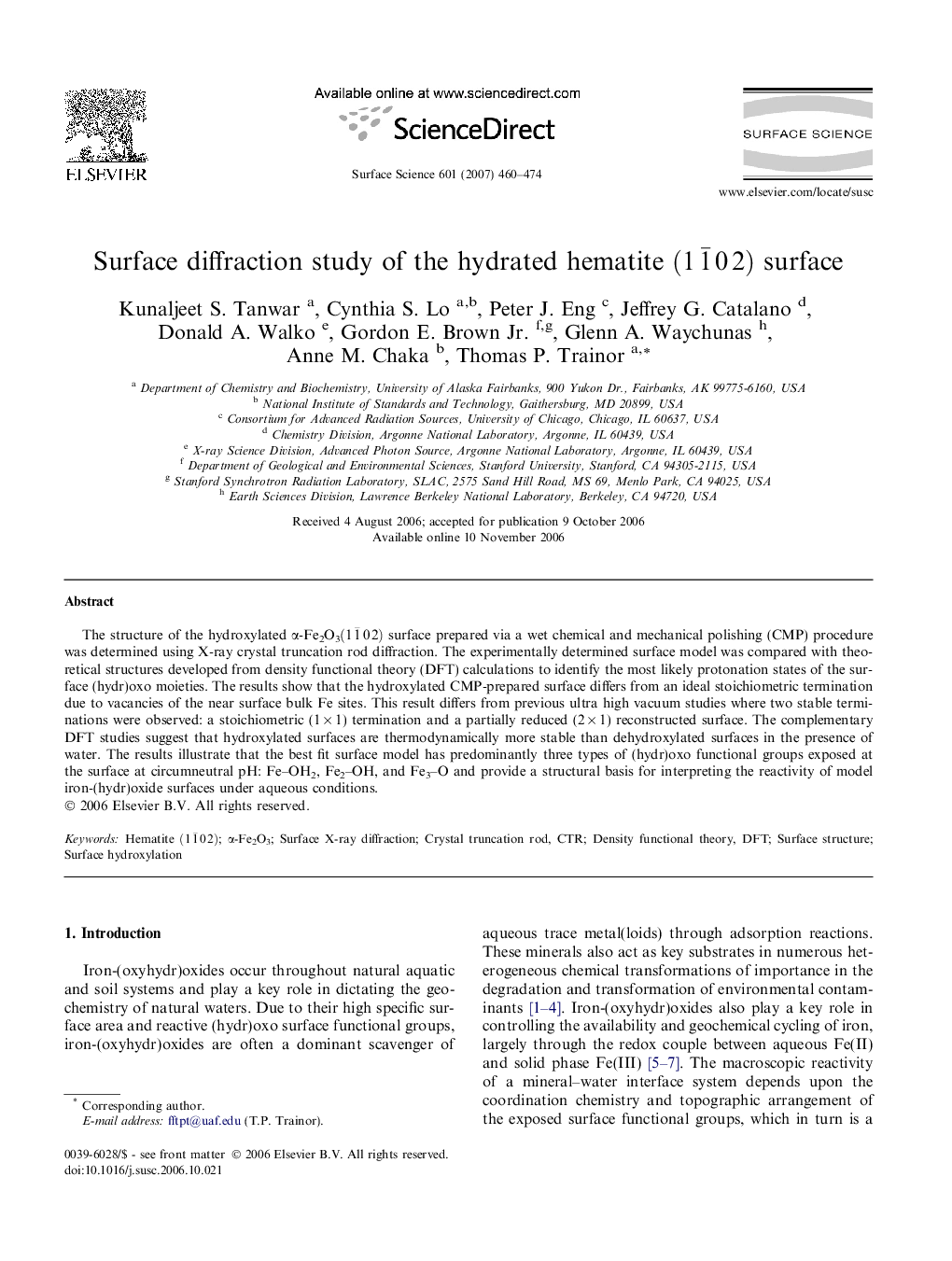| Article ID | Journal | Published Year | Pages | File Type |
|---|---|---|---|---|
| 5426156 | Surface Science | 2007 | 15 Pages |
The structure of the hydroxylated α-Fe2O3(11¯02) surface prepared via a wet chemical and mechanical polishing (CMP) procedure was determined using X-ray crystal truncation rod diffraction. The experimentally determined surface model was compared with theoretical structures developed from density functional theory (DFT) calculations to identify the most likely protonation states of the surface (hydr)oxo moieties. The results show that the hydroxylated CMP-prepared surface differs from an ideal stoichiometric termination due to vacancies of the near surface bulk Fe sites. This result differs from previous ultra high vacuum studies where two stable terminations were observed: a stoichiometric (1 Ã 1) termination and a partially reduced (2 Ã 1) reconstructed surface. The complementary DFT studies suggest that hydroxylated surfaces are thermodynamically more stable than dehydroxylated surfaces in the presence of water. The results illustrate that the best fit surface model has predominantly three types of (hydr)oxo functional groups exposed at the surface at circumneutral pH: Fe-OH2, Fe2-OH, and Fe3-O and provide a structural basis for interpreting the reactivity of model iron-(hydr)oxide surfaces under aqueous conditions.
